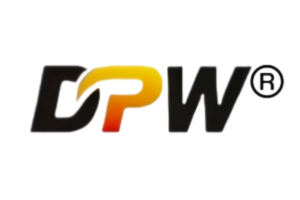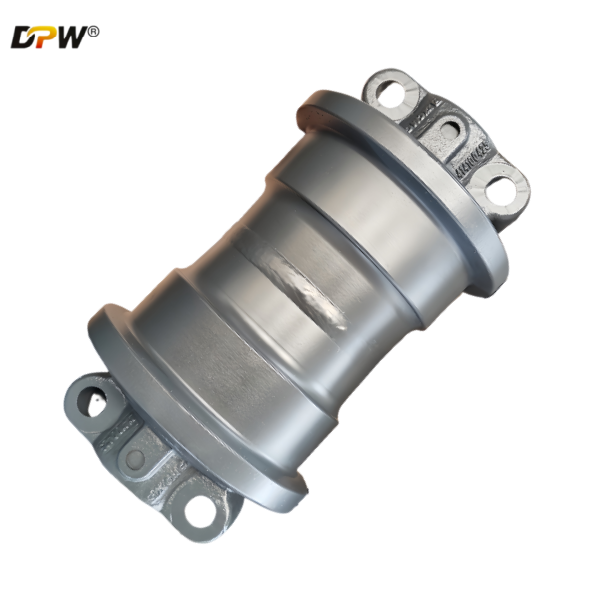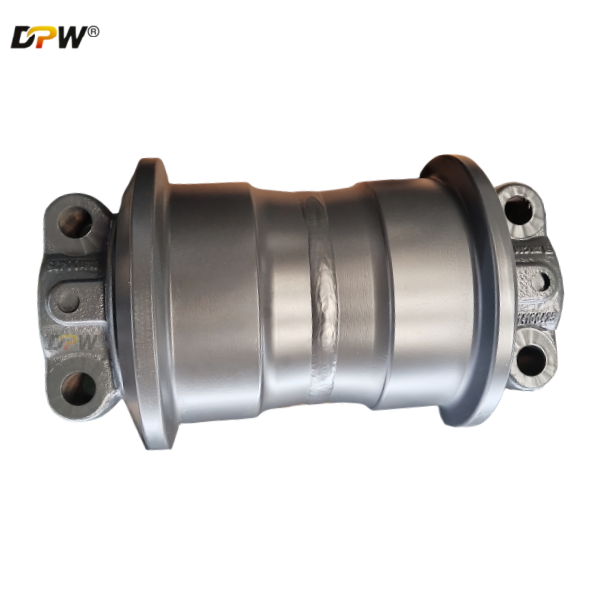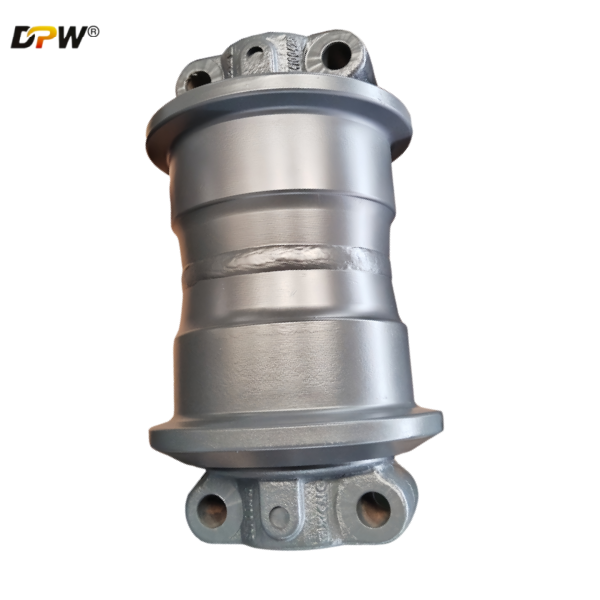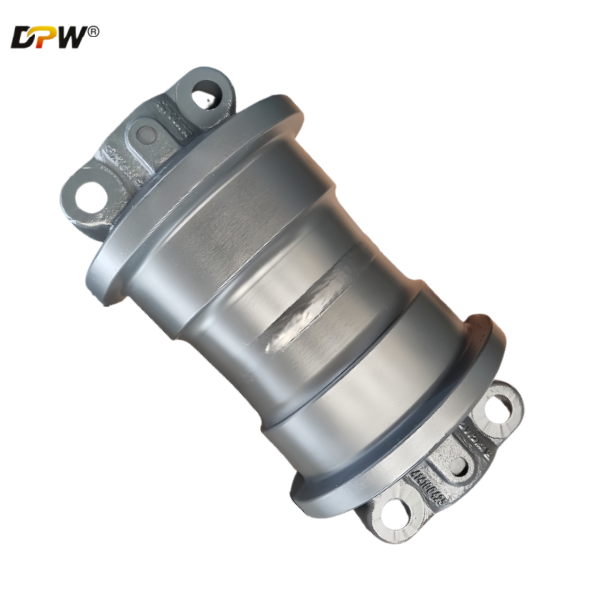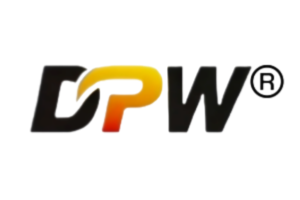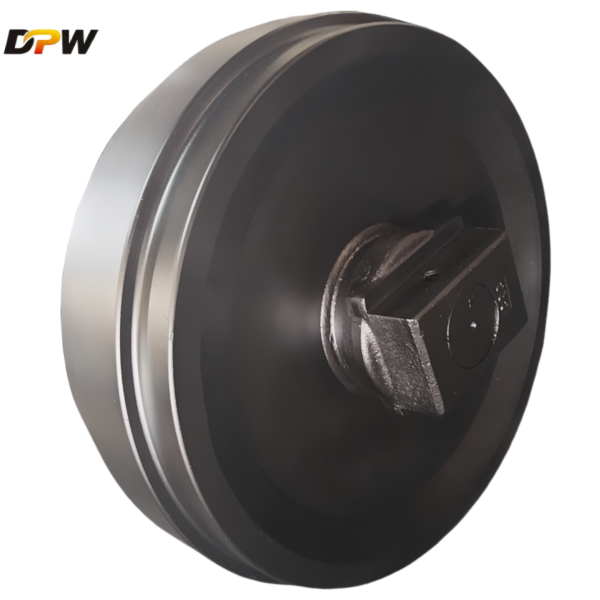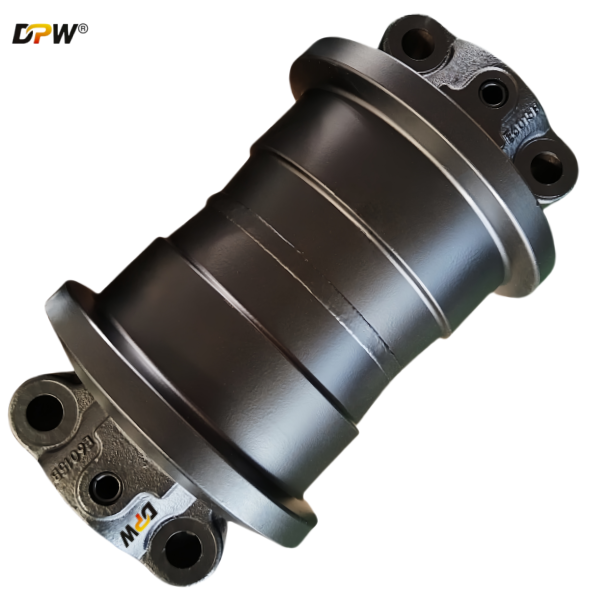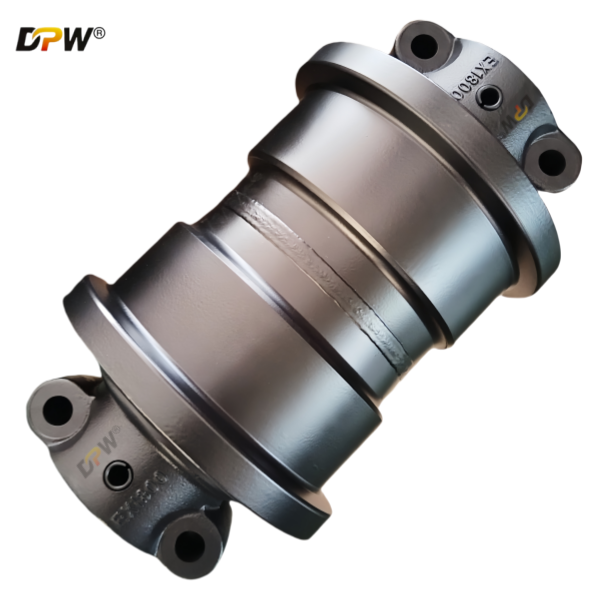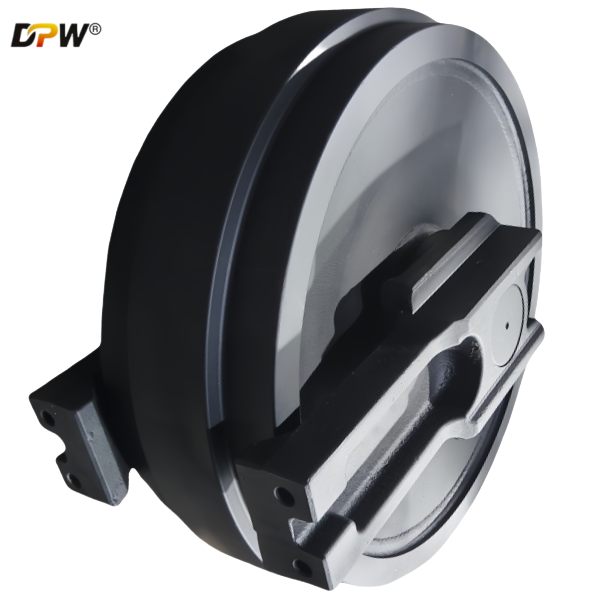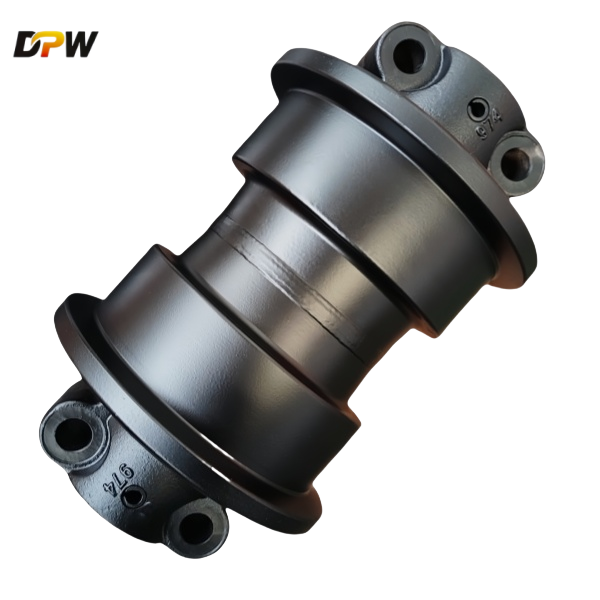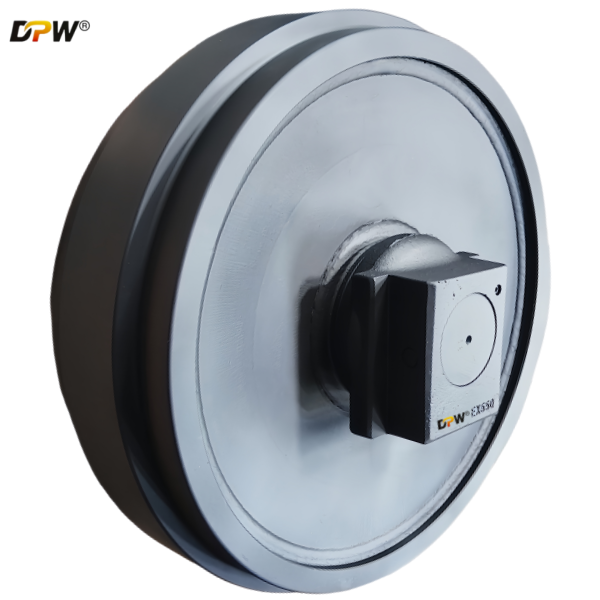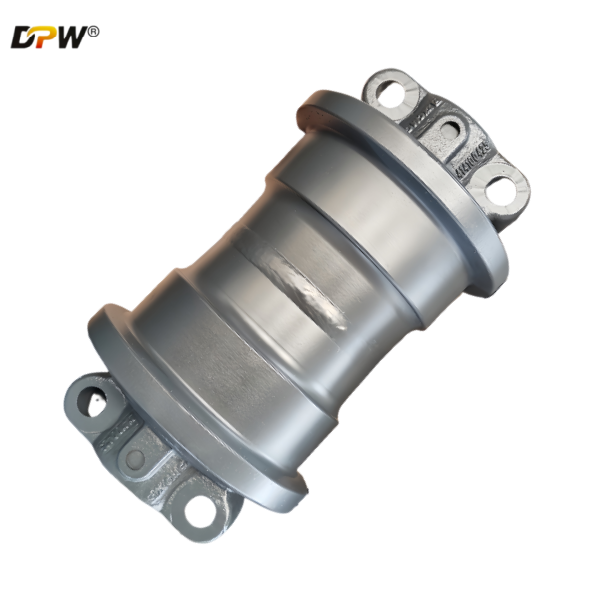
XCMG 414100425 XE215 Track Bottom Roller Assembly/OEM quality undercarriage parts/source manufacturer and factory
Product Specifications
Technical Description: XCMG 414100425 XE215 Track Bottom Roller Assembly
1. General Overview & Functional Definition
The XCMG 414100425 Track Bottom Roller Assembly, also known as the lower roller or track roller, is a critical load-bearing component within the undercarriage system of the XCMG XE215 hydraulic excavator. Unlike the front idler or drive sprocket, its primary function is static support and guidance. Its core responsibilities are:

Primary Load-Bearing: It directly supports the majority of the machine's operational weight, carrying the load from the mainframe through the track chain and distributing it evenly across the track shoe's ground contact area.
Track Chain Guidance: It guides the bottom (ground-contact) section of the track chain, maintaining its linear path and alignment between the front idler and the rear sprocket.
Impact and Vibration Damping: As the first line of defense against ground irregularities, it absorbs and dissipates vertical shock loads and vibrations from traversing rough terrain, protecting the entire undercarriage and mainframe structures.
Facilitation of Linear Travel: By providing a continuous, low-friction rolling surface for the track chain's link pins and bushings, it enables the smooth forward and reverse movement of the machine.
2. Detailed Component Breakdown & Technical Specifications
The assembly is a self-contained, pre-lubricated, and sealed unit designed for high durability and ease of replacement.
2.1. Roller Wheel (or Rim)
Material & Manufacturing: Typically forged from high-carbon, wear-resistant steel such as 55Mn or 60Si2Mn. Forging provides superior impact strength and fatigue resistance compared to casting.
Design Features:
Double-Flange or Single-Flange Design: Most rollers in this class feature a double-flange design (one flange on each side) to positively guide the track chain and prevent lateral slippage. Some center rollers may be single-flanged or flangeless.
Hardened Running Surface: The outer circumferential surface that contacts the track chain bushing is induction hardened to a significant depth (e.g., 4-7 mm). This achieves a high surface hardness (58-62 HRC) to resist the severe abrasive wear caused by the rotating track bushing.
Precision Machining: The tread and flange profiles are machined to precise tolerances to ensure smooth interaction with the track chain and to minimize edge stress.
2.2. Roller Shaft (Axle)
Function: This is the stationary axle that serves as the mounting point for the entire assembly to the track roller frame. It transmits all operational loads from the roller to the machine's main structure.
Material & Specification: Manufactured from high-tensile alloy steel, such as 40Cr or 42CrMo, and heat-treated (quenched and tempered) to achieve a tough core that resists bending and shear forces. The mounting ends are often machined with flats or threads for secure attachment.
2.3. Bearing System
Type: The XE215 typically employs a Double-Row Self-Aligning Ball Bearing or a set of Needle Roller Bearings housed within a sealed cartridge.
Function:
High Radial Load Capacity: Specifically engineered to withstand extreme radial loads from the machine's weight.
Misalignment Tolerance: The self-aligning feature allows the roller to rotate freely even if minor misalignments exist between the shaft and the roller housing.
Contained Lubrication: The bearings are packed with high-temperature grease during assembly and sealed for life.
2.4. Multi-Stage Sealing System
Configuration: A robust, multi-barrier sealing system is critical due to the roller's constant exposure to abrasives, mud, and water. This typically consists of a radial lip seal (often Nitrile rubber) combined with a dust lip and sometimes an integrated labyrinth path.
Function: This system works to prevent the ingress of external contaminants into the bearing chamber and to retain the lubricating grease. The effectiveness of these seals is the primary determinant of the roller's service life.
2.5. Hub & Housing
The hub is the central body that rotates around the stationary shaft. It houses the bearings and seals and provides the mounting surface for the roller wheel.
The housing forms the outer structure of the roller and is the component that directly contacts and supports the track chain.
2.6. Lubrication Fitting
Many modern designs include a grease nipple (zerk fitting) to allow for periodic re-lubrication. This helps to purge any minor contaminants that have bypassed the primary seals and replenishes the grease, extending service life.
3. Integration within the XE215 Undercarriage System
The Bottom Roller Assembly works in coordination with other undercarriage components:
It is mounted directly onto the Track Roller Frame.
It supports the track chain in conjunction with the Front Idler and Rear Sprocket.
It aligns with the Top Carrier Rollers to form a complete track guidance and support system.
Multiple bottom rollers are used per side to distribute the machine's weight evenly along the track's length.
4. Critical Performance & Maintenance Parameters
Wear Limit Monitoring: The primary wear point is the outer diameter of the roller wheel and the height of the flanges. XCMG provides specific maximum wear limits. Operating beyond these limits allows the track chain to sag and contact other components, leading to rapid, cascading wear across the entire undercarriage.
Flange Integrity: Worn or broken flanges can no longer guide the track chain properly, significantly increasing the risk of de-tracking.
Seal Integrity Inspection: Regular visual inspection for grease leakage (evidenced by a buildup of dirt and grease on the roller side) or a seized roller is essential. A seized roller will act as a brake, causing rapid, localized wear on the track chain link.
Frame Alignment: Proper alignment of the track roller frame is crucial. A misaligned frame will cause uneven and accelerated wear on one side of all the rollers.
5. Failure Mode and Effects Analysis (FMEA)
Premature Tread Wear: Caused by operating on highly abrasive ground or improper track tension.
Flange Wear/Failure: Often a result of chronic side-loading from turning on hard surfaces or operating on severe side slopes.
Bearing Seizure: The direct result of seal failure, leading to contamination ingress, lubricant loss, and eventual locking of the roller.
Roller Jamming: A seized roller will not turn, causing it to grind against the track bushing, generating extreme heat and rapid wear, potentially leading to a broken track link.
